
As I’ve previously shared, I was excited to learn that my online course, ETT 510: Instructional Media and Technology, has received the distinction as a Blackboard Catalyst Exemplary Course for 2013. Here’s a brief course tour I’ve prepared to be included with other Blackboard Exemplary Course Award-winning courses that showcases a few of the highlights of this course.
For those interested, below I’ve included more details about this course and the elements that the reviewers of my course agreed were exemplary.
 Jason Rhode receiving Blackboard Catalyst Exemplary Course Award at BbWorld14
Jason Rhode receiving Blackboard Catalyst Exemplary Course Award at BbWorld14
About the Course Design
This course, ETT 510: Instructional Media & Technology, happens to be a required first-semester course for in-service teachers pursuing a Master’s Degree in Instructional Technology with a K-12 tech specialist endorsement. While I had taught this subject matter previously, this happened to be the first opportunity for me to teach this course at NIU and I would be the first instructor to teach this course in the online, accelerated format in Blackboard at NIU.
While students in this course attended a face-to-face orientation at the beginning of this course, the remainder of the course was fully-online. As such, the course was designed as a fully-online course with interaction and collaboration, assessment, and learner support elements designed for a fully-online learning experience for students. Course objectives were written in measurable outcomes, easily located throughout the course, and made available in a variety of areas in the course (within the syllabus and each individual learning unit). Notable areas of the course demonstrating exemplary course design elements included:
Welcome – Start Here
The course entry point was a content area with an item that provides students with easy access to course description, objectives, orientation, getting started tips, online synchronous meeting dates/times, as well as contact information for course instructor and online support specialist who would serve as primary student support contact throughout the cohort program.
Your Classmates
In an effort to promote the building of an online learning community, photos of each student were taken at initial face-to-face orientation and made available as a cohort photo directory students can view within the “Your Classmates” area of the course or download as 1-page PDF, also available within “Your Classmates”. These instructor-posted student photos turned out to be extremely helpful in developing social presence, especially given the fact that NIU has not yet enabled the cloud profiles feature in Blackboard.
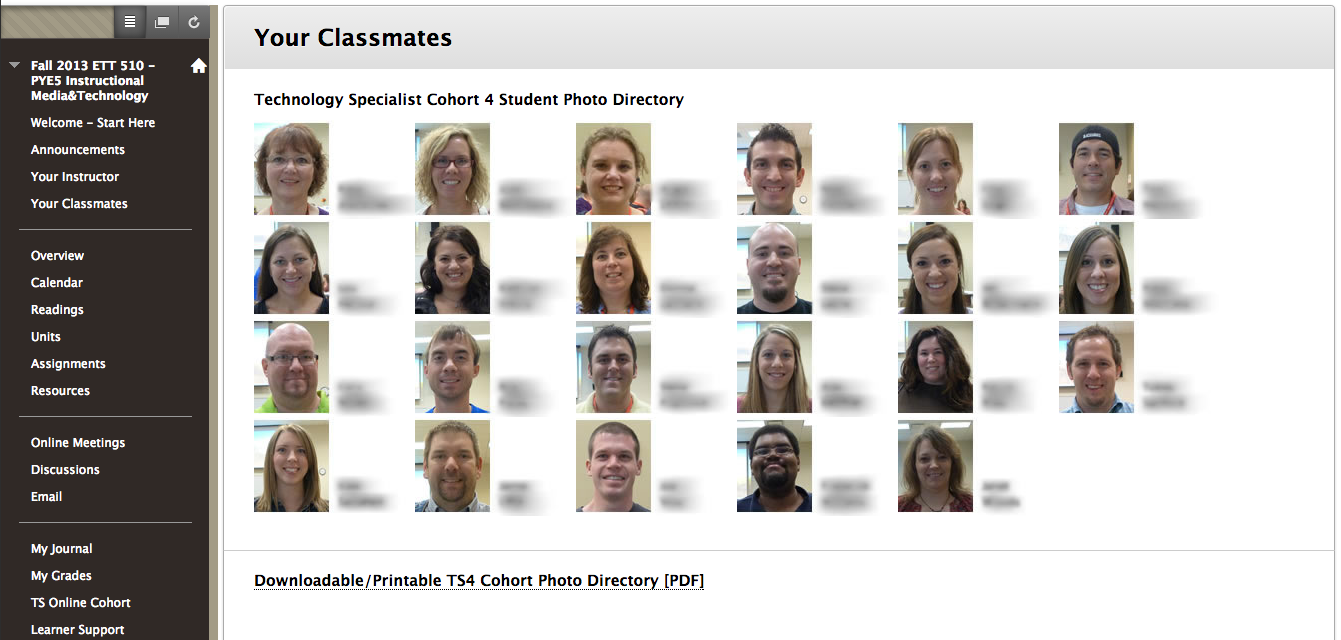
Units
The course was organized into Units, with objectives for each unit included in the description of each unit folder as well as within the folder. Each unit contained an introduction and welcome to the unit from the instructor, overview, objectives, readings and resources, activities and assignments, and tips for success. In short, everything students needed for the unit could be accessed from within the unit folder. Units were made available to students in sequence on the day the unit began. Units were listed in reverse chronological order so that the current unit is available at the top of the page (this reduced the need for excessive scrolling). This same reverse-chronological ordering of items was carried through the Discussions area as well for consistency sake.
Readings
The readings and other instructional content items were organized by unit and available for the entire course in the “Readings” area of the course. All readings and instructional videos were made available to students at the beginning of the course for students who wished to work ahead on their readings. A CourseSmart e-textbook was used along with numerous visual and auditory elements.
Calendar
A link to the Calendar tool was included in the course menu, as it contains due dates and links to all course activities and assignments. Due dates were assigned to all assignments in Blackboard so they were automatically listed in the Calendar.
Interaction and Collaboration
Both interaction and collaboration were important components purposely designed and developed throughout this course. Utilizing a constructivist approach, plentiful opportunities for synchronous and asynchronous interaction were designed that promote critical reflection and other higher order thinking skills. Synchronous online class meetings conducted via Adobe Connect included activities that benefited from real-time interactions and facilitated “rapid response” communication.
Communication activities throughout the course were designed to help build a sense of community among learners. Student-to-student interactions were required as part of the course, with quality expectations and rubric explaining evaluation criteria provided and students are encouraged to initiate communication with the instructor. The instructor actively participated in communication, including providing timely and detailed feedback to students. Notable areas of the course demonstrating exemplary interaction and collaboration elements include:
Announcements
I used communication tools, including Announcements, to provide course updates, reminders, special announcements, etc. I recorded a weekly introduction to the unit and embedded in an Announcement posted at the beginning of the unit as well as included within the unit folder. In addition to using Blackboard’s Announcement, Email, and Discussion tools for interacting with students, I also used a Remind101 texting list that all students joined for sending reminders and news items.
Discussions
Participation in asynchronous discussion was required during units 1-8. During each graded unit discussion forum, students chose from among several discussion questions to post an initial response to. Forums were “post-first” so that students were not able to see the posts of their classmates until after them posted their initial response, promoting original thinking. Students were then required to respond to a minimum of two other classmates during the forum who didn’t already have two other responses.
My Journal
At the conclusion of each unit, students reflected on their learning journey during the unit and posted a reflection to their online journal in Blackboard. This journal was where students documented in their reflections any “aha” moments they had as well as poignant comments from the discussion, readings and resources, or any other takeaways. The journal was especially helpful to students when they wrote their Self-Assessment Paper near the end of the course. Students had the option to journal using either text or video.
Groups
Collaboration was a key to this course, with groups of 3-4 students each formed during unit 1. Students then worked with their group throughout the remainder of the course to research and give a presentation introducing an assigned instructional design model as well as to prepare a three-phased instructional design document. Groups had access to all group collaboration tools in Blackboard as well as an Adobe Connect room for their group.
Assessment
A wide variety of assessments were incorporated into this course, including discussions, blogs, journals, group research project and presentation, and group instructional design document assignments, providing students with a diverse assortment of online assessment experiences to demonstrate their competence in meted stated outcomes. Assessments included were designed to mimic authentic instructional design environments, requiring higher order thinking including synthesis of concepts, analysis, and problem solving. Many self-assessment opportunities were provided through weekly self-assessment journals and Self-Assessment Reflection Paper where students reflected on their own learning progress and received constructive, meaningful feedback from the instructor.
Within the “Assignments” content area, all assignment instructions were provided for students to view at any time during the course. In addition to interactive rubrics used for grading all discussions, journals, blogs, and assignments, rubrics were included in the description of each assignment. Assignments were deployed within the “Activities and Assignments” folder within the corresponding unit folder in which it is due, resulting not only in all required information for a given activity easily accessibly to students at the point and time needed, but assignments only available for students to complete when the corresponding unit folder is available to students in Blackboard.
Adaptive release rules were used to control the availability of all Blackboard tools used (discussions, blogs, assignments, etc.) reducing cognitive overload as students could not submit assignments until the week in which the assignment was due. Students did however have access to the rubrics and all instructions and expectations from the beginning of the course within the “Assignments” menu item.
Learner Support
Students in this course, as members of a cohort program, were fortunate to have an Online Support Specialist assigned to them who was their primary personal support conduct for the duration of their program. Despite the fact that this highly available support staff member was available, a variety of other learner support elements were incorporated into the course design, including:
Your Instructor
The “Your Instructor” menu item included contact information for the instructor, in multiple forms of communication, including phone, text, email, and Twitter. Also included were details including expected response time for email replies, instructor’s role explained, etc.
Learner Support
The “Learner Support” area of the course included clearly labeled tutorial materials explaining how to navigate the LMS and the specific course. Video tutorials by the instructor were captioned and fully accessible. Links to additional tutorial materials, such as Blackboard Help Manual for Students as well as Blackboard Tutorials for Students, and included to support multiple learning modalities: audio, visual, and text based. Links were included to mobile apps that students would use during the course. Contact information for NIU’s 24/7 Helpdesk were included. Technical accessibility issues were addressed with course materials using standard formats to ensure accessibility and videos all streamed directly from YouTube.
Overview
The “Overview” area of the course, while containing the syllabus and other general course overview information items, included numerous additional learner support items as well as links to institutional policies, materials, and forms of relevant learner success. Included were links to institutional services, such as the library and writing center, clearly labeled and easy to find.
Overview > Feedback
Student feedback was important in guiding future iterations of this course. Students had the opportunity to give feedback to the instructor regarding course design and course content both during course delivery and after course completion. Through the Mid-Course Feedback Survey (Unit 5) and End-of-Course Feedback Survey (Unit 10) students participated anonymously in course evaluation. There was also a “Glitches” discussion forum where you can report any typos, broken link, or other error in the course.
Exemplary Practices
The top three “stand-out practices” self-identified in this course include:
Weekly Unit Introduction YouTube Videos
To promote increased sense of instructor presence in this course, I recorded and posted unit introduction videos each week that introduced key concepts and activities for the upcoming unit as well as wrapped-up the previous unit discussions and activities. These videos recorded on YouTube were embedded as the first items within the Units content folders as well as within Announcements, automatically emailed to students when posted in Blackboard. Videos were also made available via an instructor-created YouTube playlist that students could access via their mobile device outside of Blackboard.
These YouTube videos from me were all recorded using using YouTube’s built-in webcam recording capabilities as well as captioned with YouTube’s built-in captioning feature. A tutorial demonstrating how the instructor recorded and captioned videos is available here.
In addition to the YouTube videos all being captioned with caption viewable by clicking the “CC” button in the embedded player, a downloadable PDF version of the transcript was attached to the videos posted in the Unit folders.
Video Participation Option for Discussions and Reflection Journal Activities
In the graded asynchronous discussions for Units 6-8 as well as weekly self-assessment reflection journals, students were given the option of participating using the Video Everywhere feature in Blackboard instead of the traditional text format. For an example, see the Unit 6 Discussion Forum. The instructor recorded and posted a screencast tutorial demonstrating how to post a video discussion response in Blackboard and denoted forums with video response options by including a video icon and instructions within the description of the selected forums. Several students did opt for participating in video and shared very positive feedback concerning the experience.
Media Exploration Activities Posted to Assignment Blog
To introduce students to emerging instructional media tools as well as provide them an opportunity to produce simple materials following principles of good visual design and production, Media Exploration Activities were assigned throughout the course where students explored a variety of web-based media tools which have direct instructional media application, creating a sample of each of the following instructional media: survey, edited image, multimedia poster, word cloud, flow chart, digital pinboard, and screencast.
For each media tool explored, students created a sample instructional media item, following principles of good visual design and production, using the tool as well as shared a summary of their experience exploring the tool (such as what features they tried, what they liked best about the tool, what surprised them, etc.). For each activity, an assignment blog was setup where students posted their sample media item created and summary of their experience. Like the rest of the assignments in the course, Media Exploration blog posts were graded using a rubric and feedback provided to students.
For examples of other award-winning online courses, see the 2013 course tour videos.
At Blackboard’s request, I’ve prepared a poster presentation for BbWorld 2014, included below. I’ll be available with the poster in the Exhibit Hall at BbWorld on Wednesday, July 15, 2014 from 5:00pm-7:00pm for anyone who would like to stop by and chat further about the course.
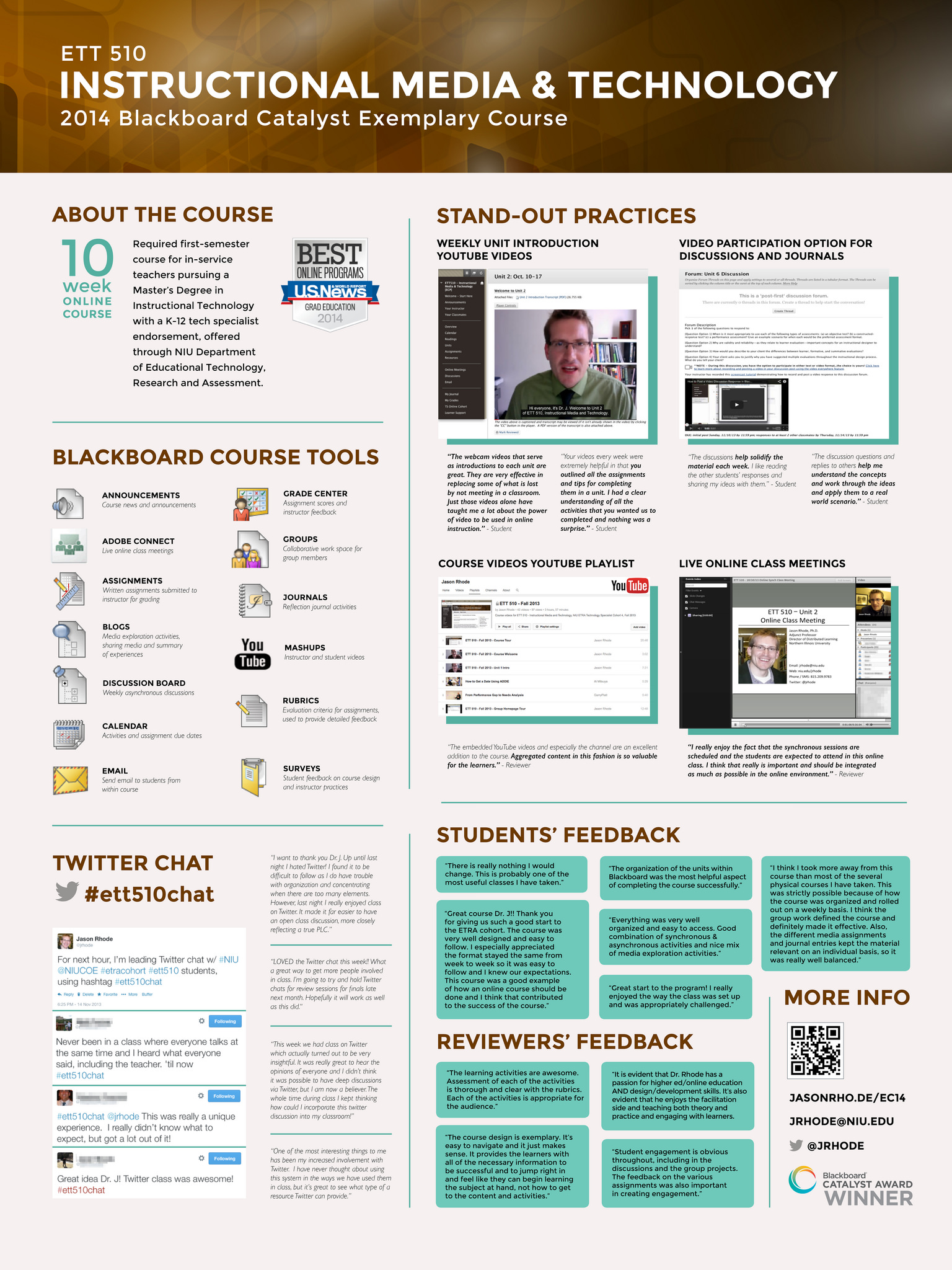 To enlarge, click poster image above
To enlarge, click poster image above
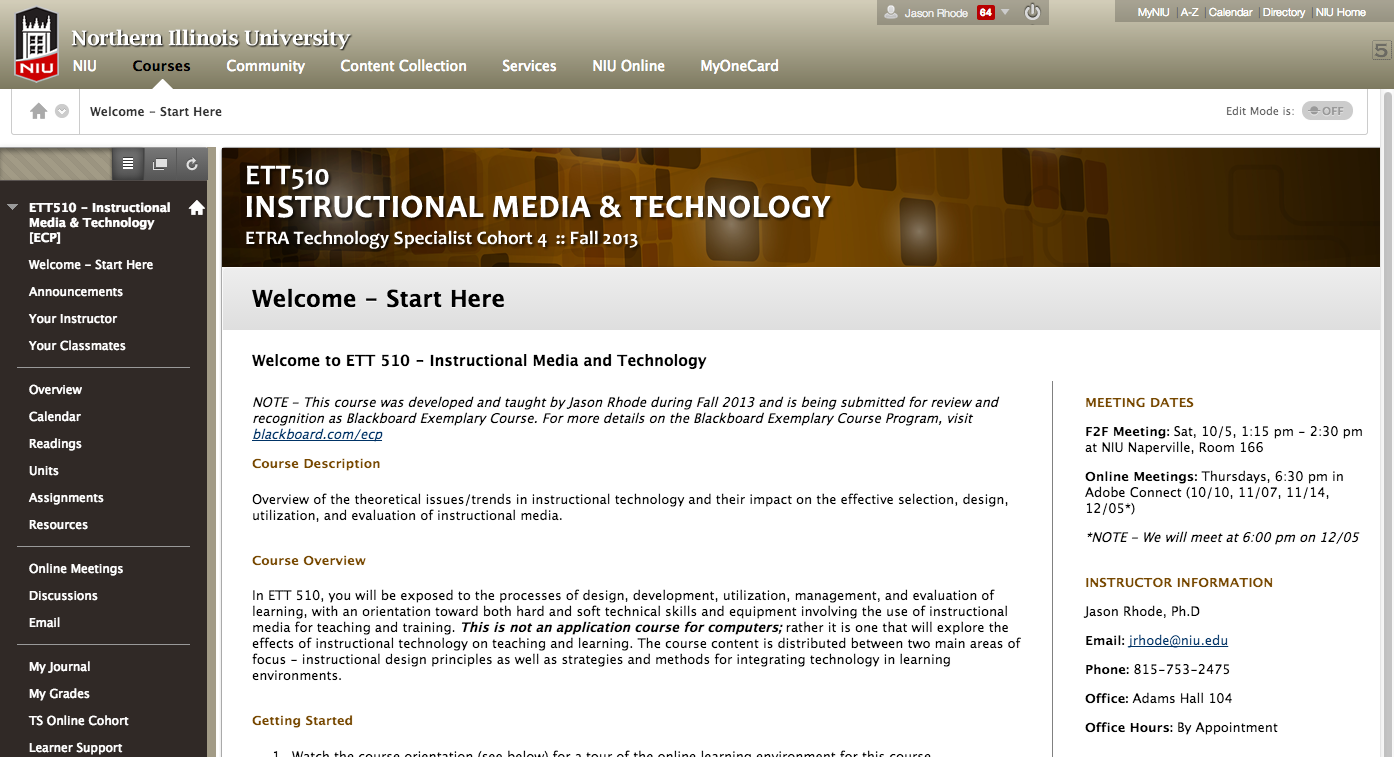
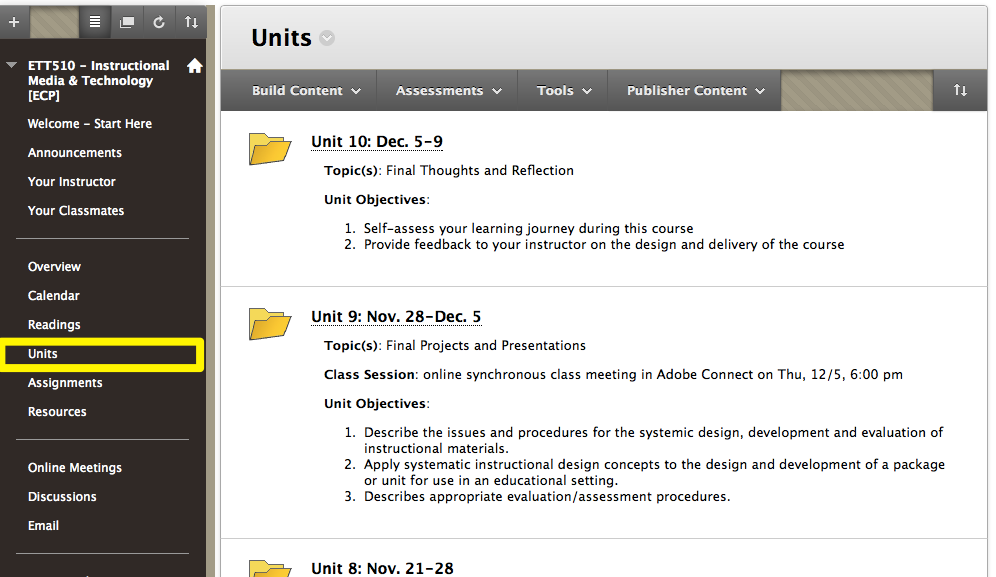
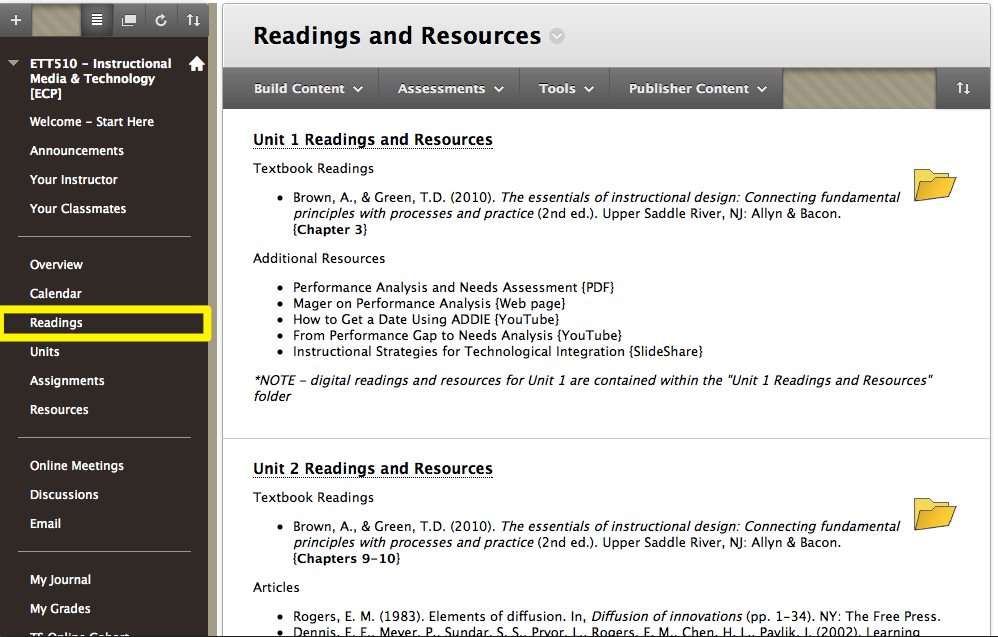
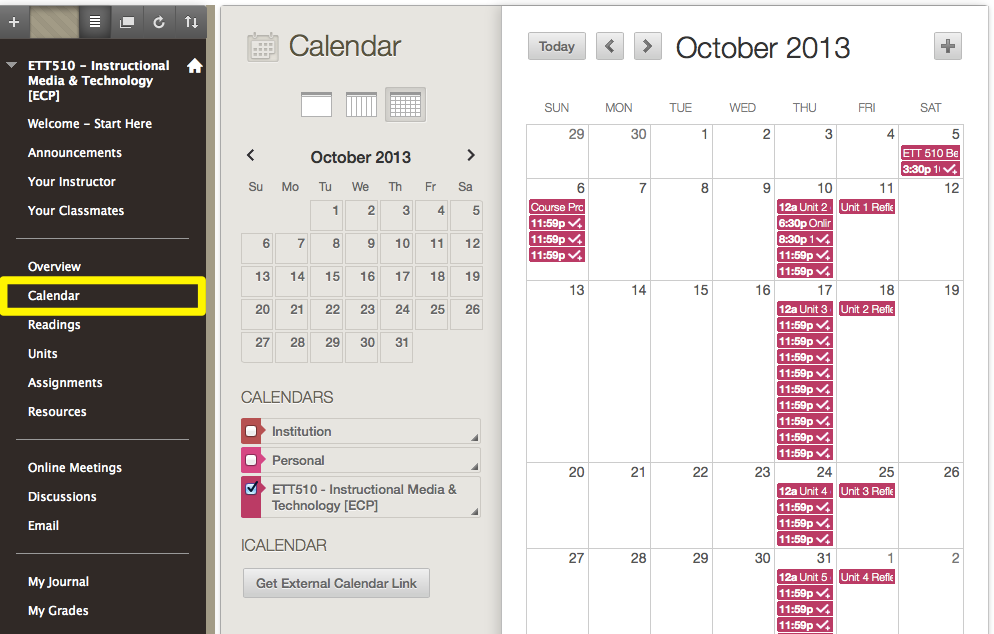
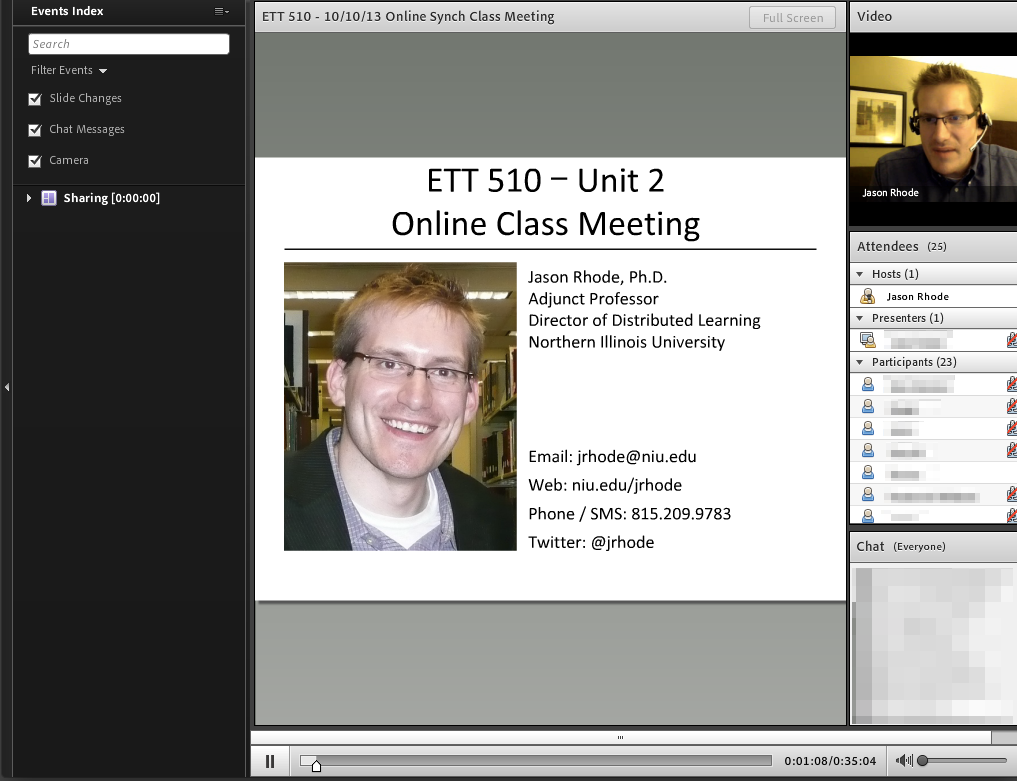
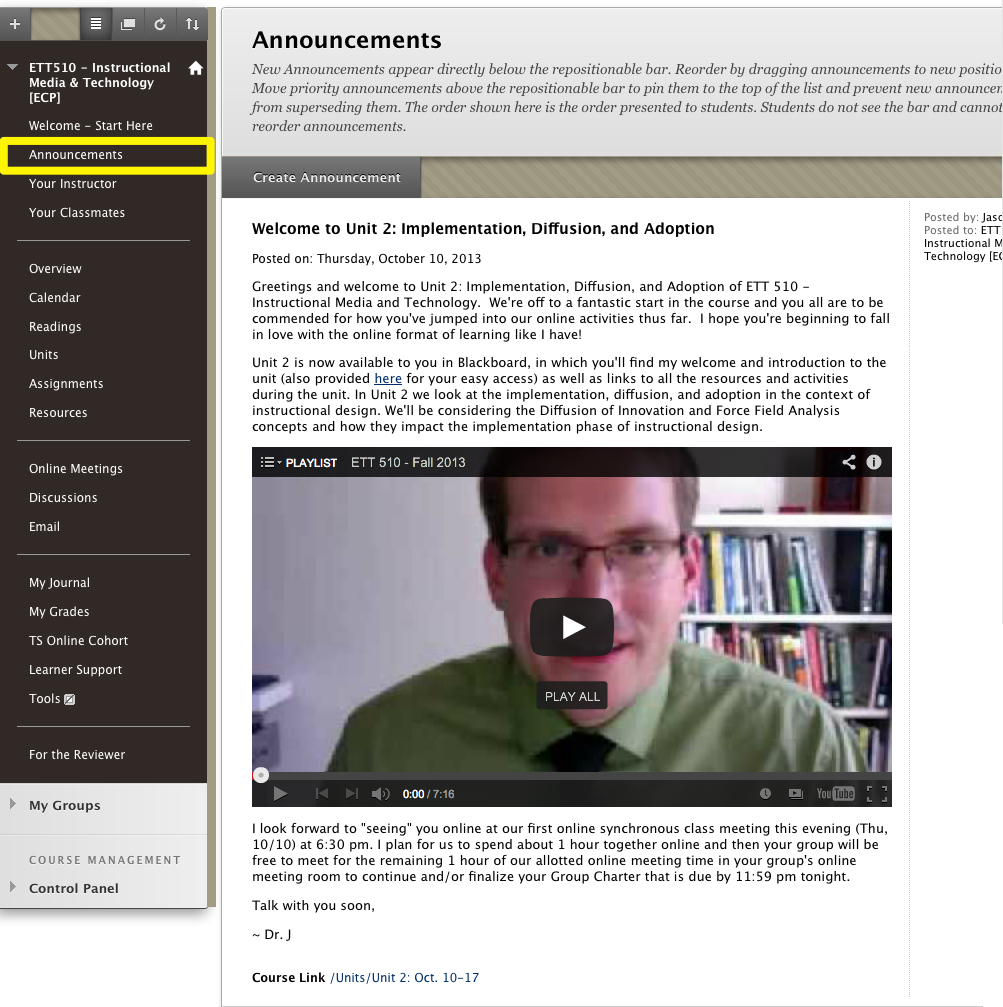
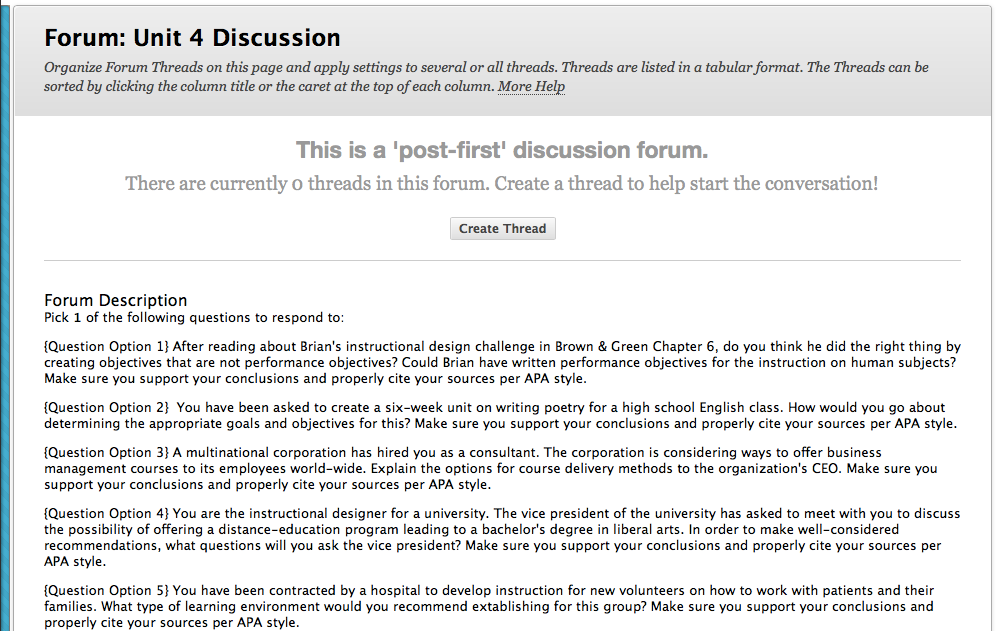
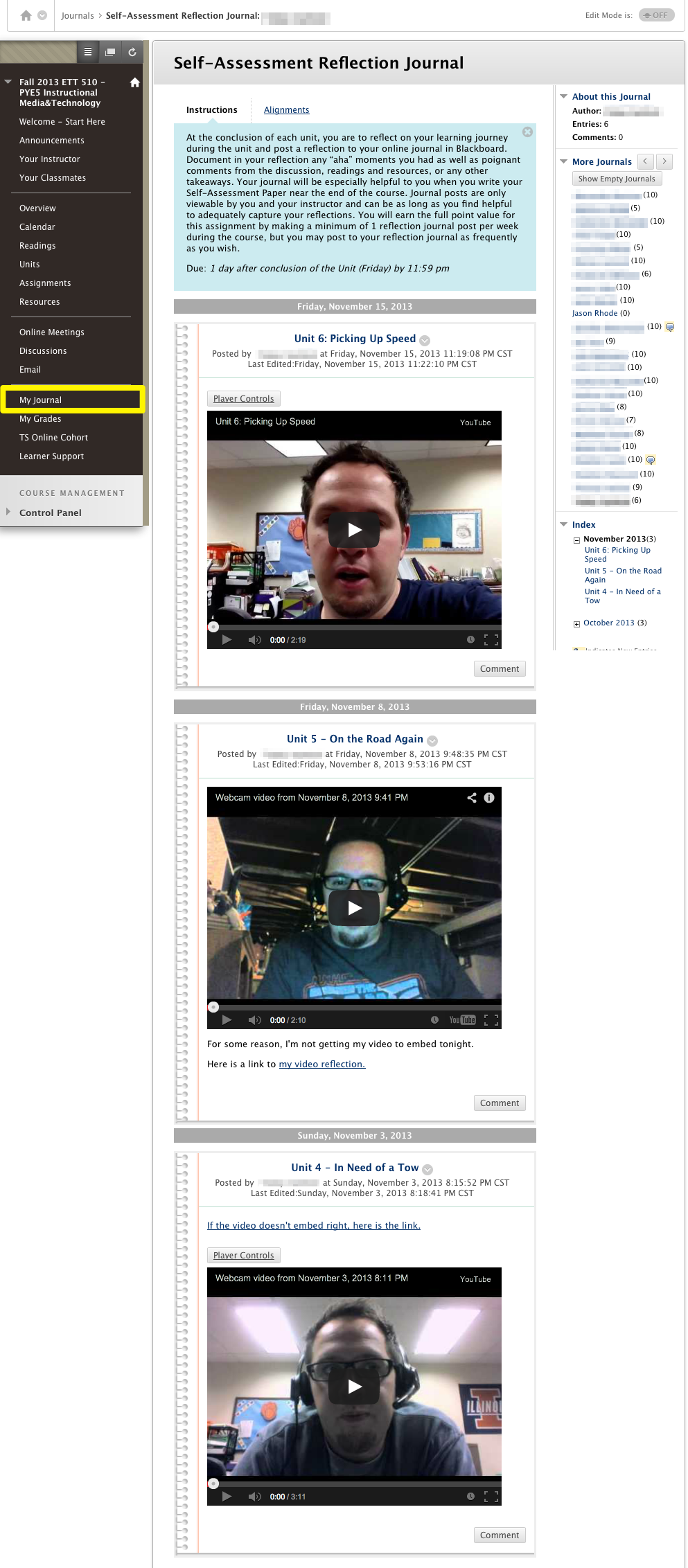
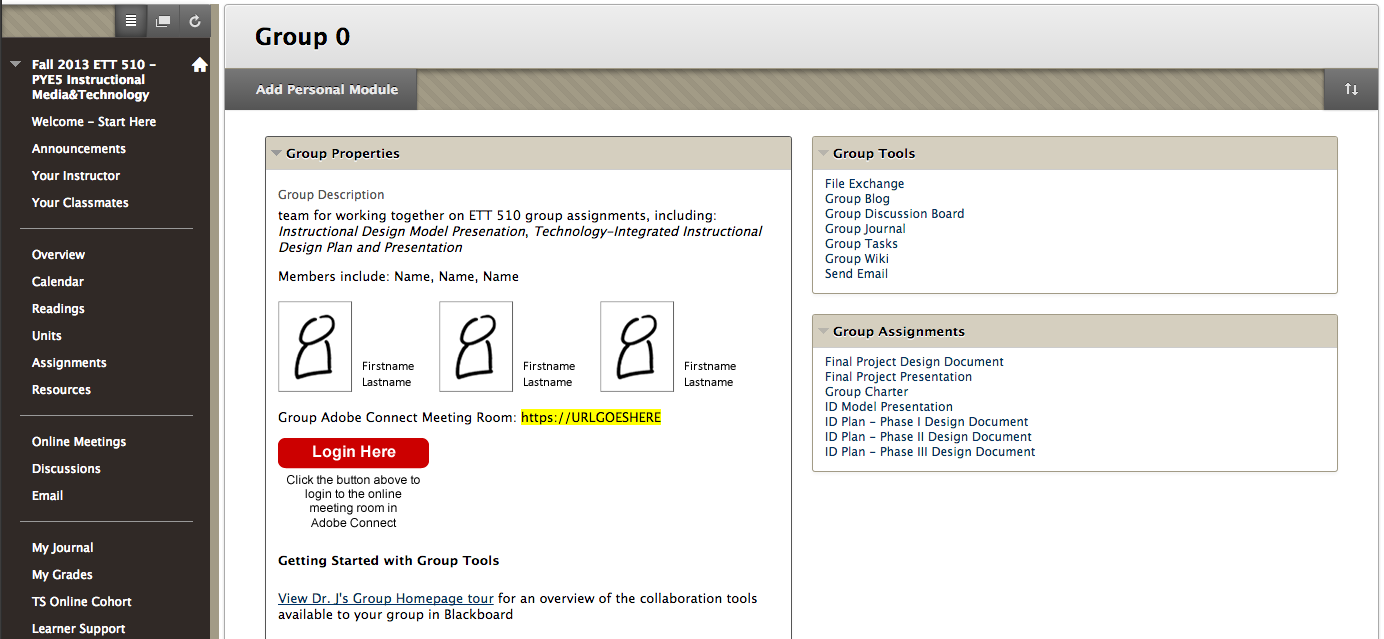
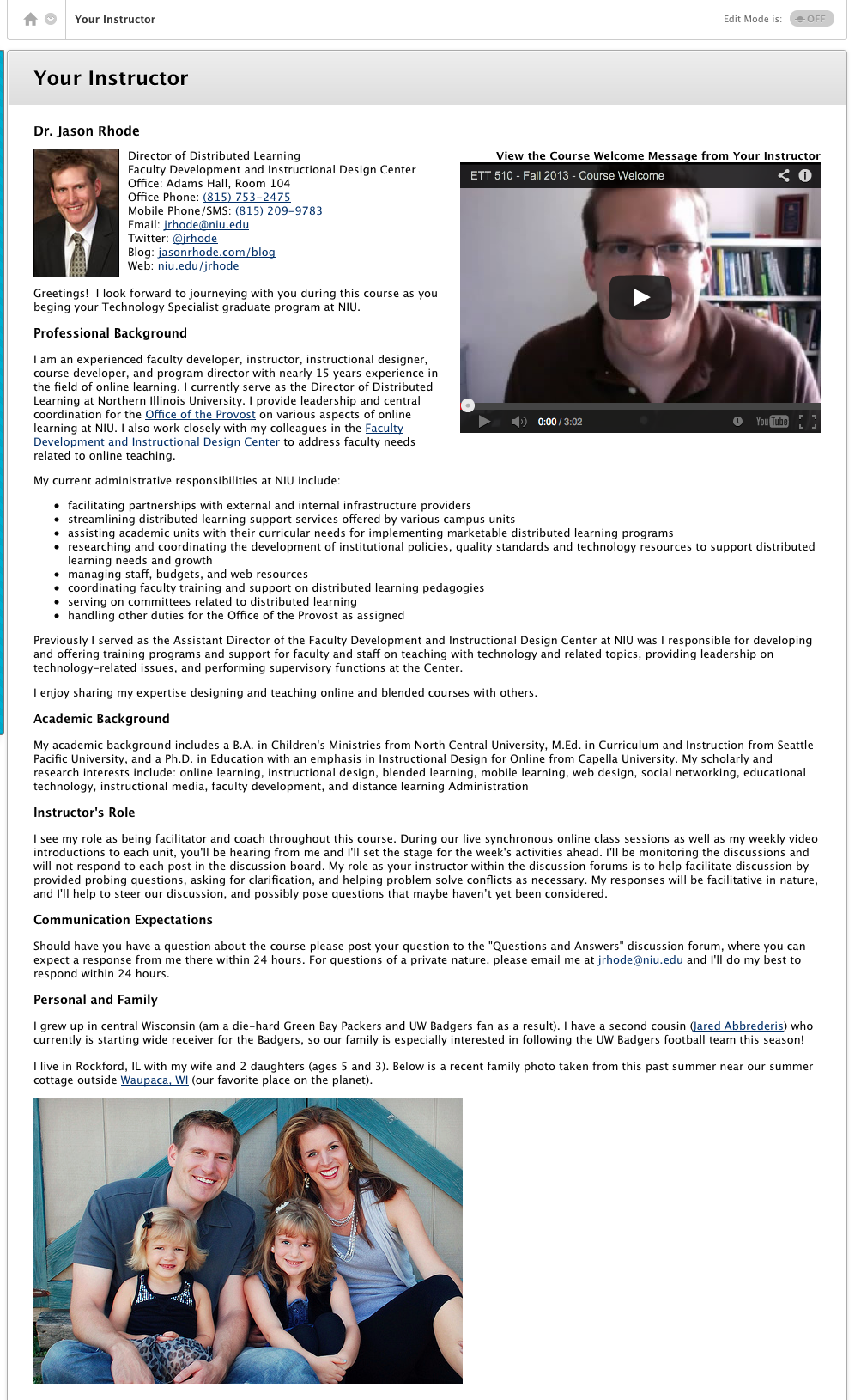
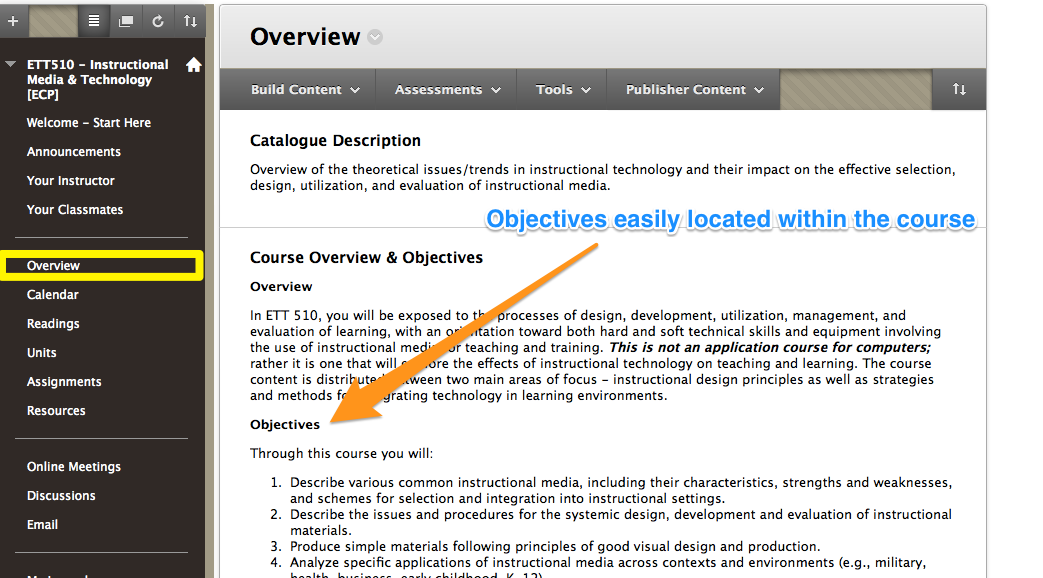
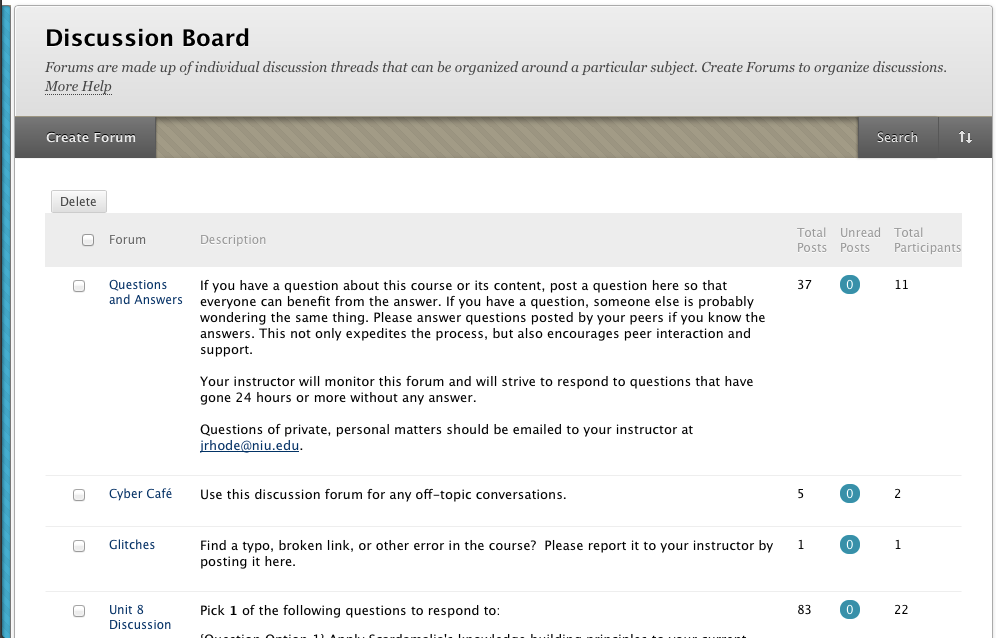
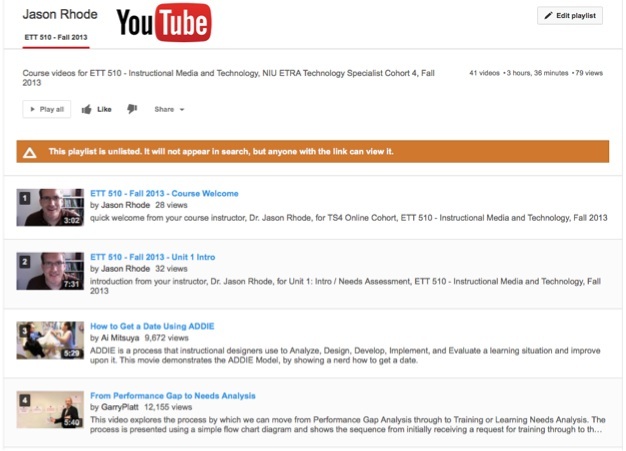

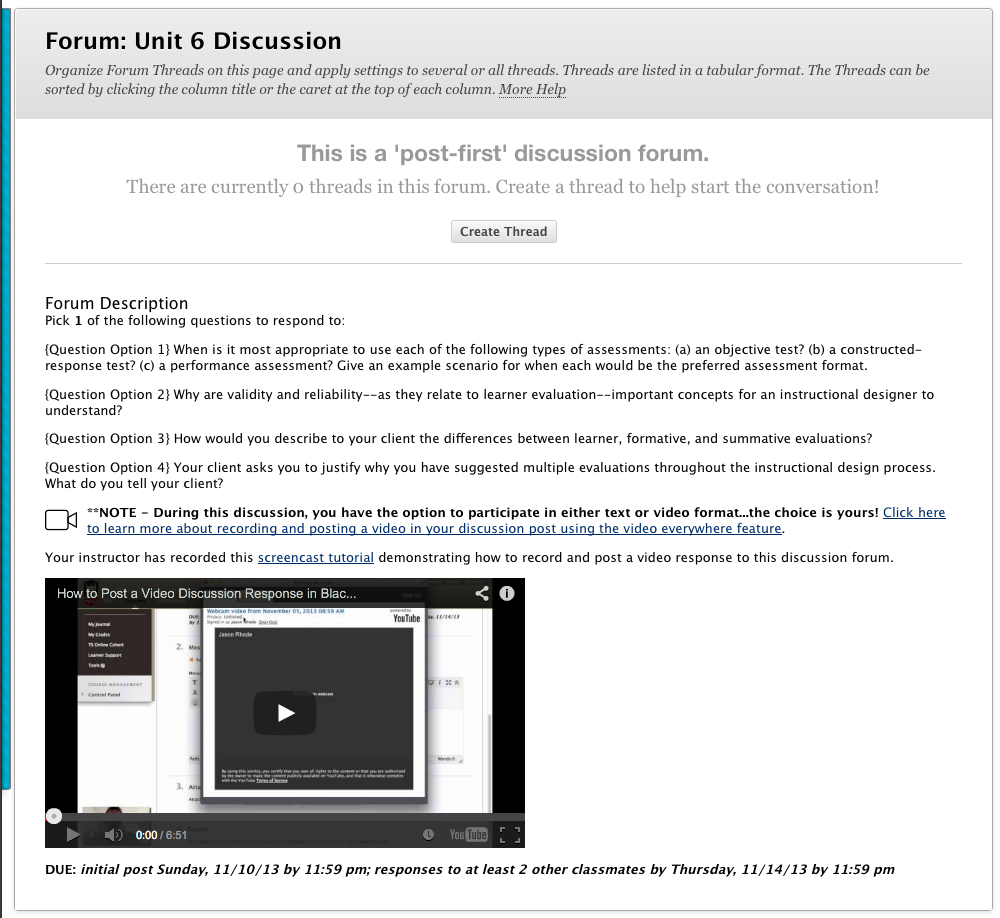
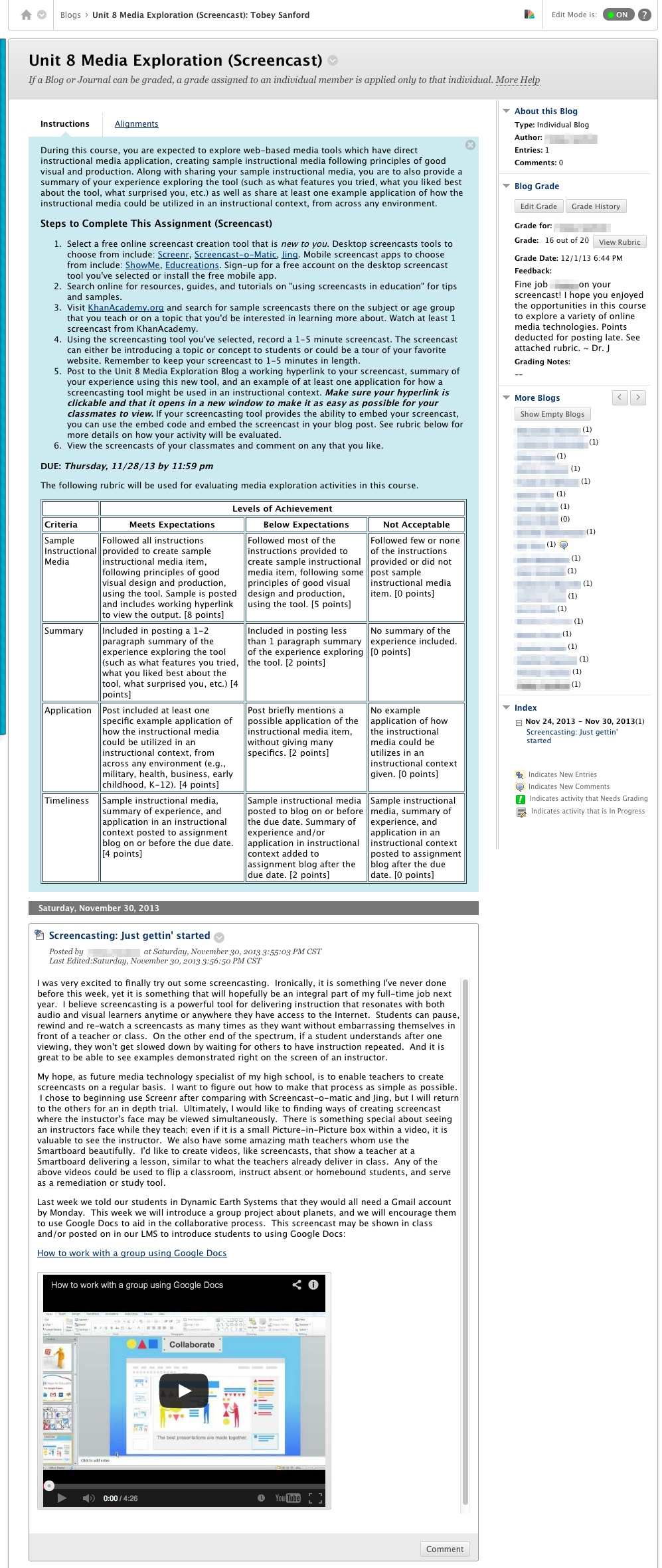


Speak Your Mind